- Quick Read
- Deep Read ( 14 Min. )
Monitor Daily Podcast
- Follow us:
- Apple Podcasts
- Spotify
- RSS Feed
- Download
TODAY’S INTRO
Zero-emission driving lessons from Norway
In the United States, California has led the way with an ambitious zero-emissions goal: By 2035, all new passenger cars and trucks bought in the state will be electric or hydrogen-powered. No fossil-fueled autos. Zero.
How’s it going? Well, progress on this lithium-ion-powered road trip is gradual. Just 9% of new car sales in the state are electric vehicles. Nationwide, the figure is about 2.5%. In China, it’s 12%.
But let’s take a look at Norway, which leads the world in this transition. This past month, 72% of all new car sales were electric vehicles. If you throw in hybrid cars (low emissions), that total jumps to 92% of new car sales.
How did Norway get so far down the road to zero emissions? Three decades of leadership choices, across the political spectrum. Yes, we’re talking about the “polluter pays” principle. Norway has high taxes on high-emission cars and low taxes on zero-emission cars. The polluting cars help to finance incentives to buy electric cars. Norway’s incentives include no sales taxes on electric vehicles, free access to bus lanes, and a 50% discount for EVs on toll roads, parking fees, and ferry tickets.
Most of the world is just starting the zero-emissions journey. But Norway has almost arrived. And that can give the rest of us hope.
Share this article
Link copied.

Help fund Monitor journalism for $11/ month
Already a subscriber? Login

Monitor journalism changes lives because we open that too-small box that most people think they live in. We believe news can and should expand a sense of identity and possibility beyond narrow conventional expectations.
Our work isn't possible without your support.
A deeper look
The world has changed. Should the Peace Corps?
For six decades, the Peace Corps has been an unusual American hybrid – part development aid, part cultural exchange, part gentle diplomacy. It’s been a program about community and connections. But is it still effective?
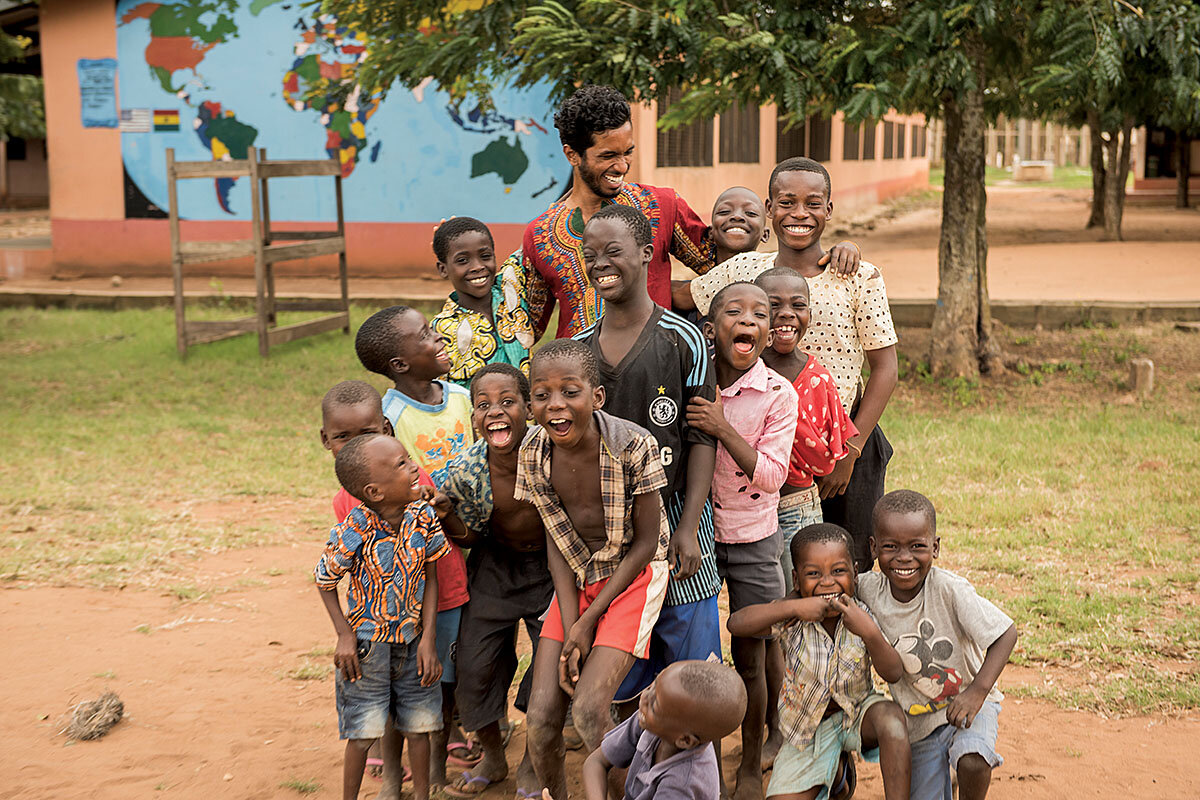
-
Nick Roll Correspondent
Since COVID-19 prompted the evacuation of all its volunteers abroad in March 2020, the Peace Corps has seen America and the world drastically change amid a racial reckoning and a historic pandemic. Now, with plans to return volunteers to the field in early 2022, lingering questions lie before it: Is a program built around sharing American values still relevant? Can Americans even agree on what those values should be? Did the program ever live up to its lofty goals?
Perhaps it’s not surprising that an organization of idealistic volunteers has plenty of people with passionate thoughts about how to reform – or in some cases, abolish – the program.
At the same time, growing “America First” rhetoric from the political right also threatens what was once a thoroughly bipartisan organization.
“A lot of people take the Peace Corps as an opportunity to party and travel around,” says Earvin Casciano, who served in Fiji. And yet volunteers like Mr. Casciano, focused and humble, represent the program at its best. He used a Peace Corps grant to help his town turn its community center into a cyclone evacuation center.
It wasn’t much, as far as development projects go. Not a bold new idea. Not a flashy execution. Just a small corner of a tiny island thousands of miles from Mr. Casciano’s New Jersey hometown, made a little better by his presence.
The world has changed. Should the Peace Corps?
The Peace Corps took Patricia Smith, like nearly a quarter-million volunteers before her, far from home.
Every morning, she rose early to walk the mile to her job, dodging cars on roads without sidewalks to make it to the public health site where she volunteered. The sun came up earlier in her host community than it did at home in Oregon, which required some adjustments. And sometimes, the culture and rhythms of life in her new environment felt very different from home. But none of that bothered Ms. Smith. In fact, it’s why she joined the Peace Corps to begin with.
The part she wasn’t expecting when she imagined her life of Peace Corps service, though, is where she was most recently assigned – a cavernous convention center in a strip-mall section of New Jersey. Up until August, Ms. Smith spent her days greeting people arriving for COVID-19 vaccinations. She originally worked in Cambodia, but was evacuated, along with every other Peace Corps volunteer in the world, in March 2020.
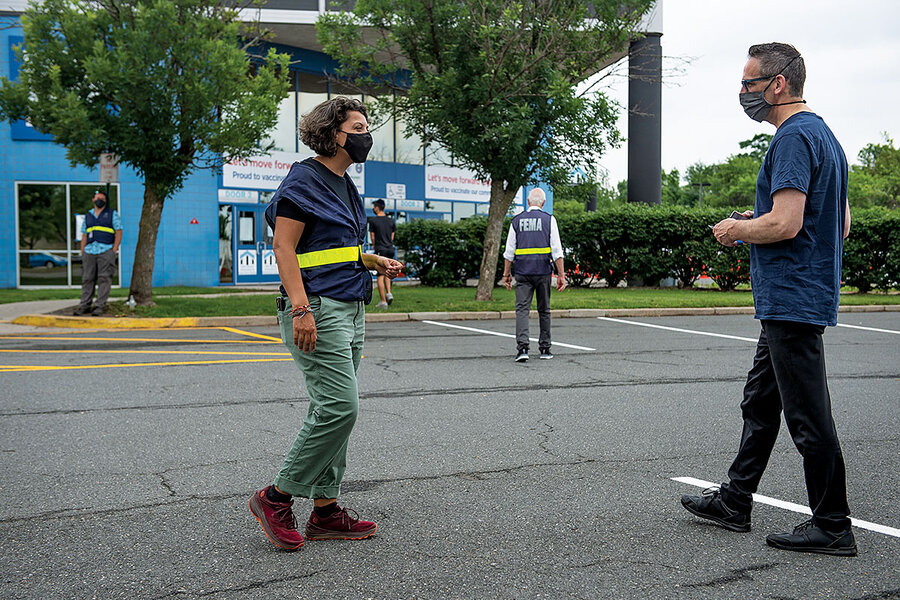
Now, she is part of a unique moment in the Peace Corps’ 60-year history. Since the agency was founded in 1961, it has never been without its legions abroad. More than 150 volunteers like Ms. Smith worked in the U.S. on COVID-19 vaccination programs over the summer, and about 250 have provided virtual support for programs in 27 of the agency’s host countries. But for all intents and purposes, the organization is at a standstill – and a crossroads.
To the organization’s supporters, the Peace Corps has long been a beacon of American idealism, a way for young Americans to see the world and provide assistance to people in the world’s poorest corners while they do it.
To its detractors, meanwhile, the Peace Corps is a dinosaur, a Cold War-era diplomacy project that has outlived its usefulness. The world is a very different place from what it was in 1961, they argue, and yet the U.S. is still sending American college graduates out to teach African farmers how to farm. It’s “really little more than an extended, government-sponsored semester-abroad program,” wrote one critic in 2010. Still others say that the U.S. shouldn’t be focusing its resources abroad at all. They see the Peace Corps as a wasted budget line.
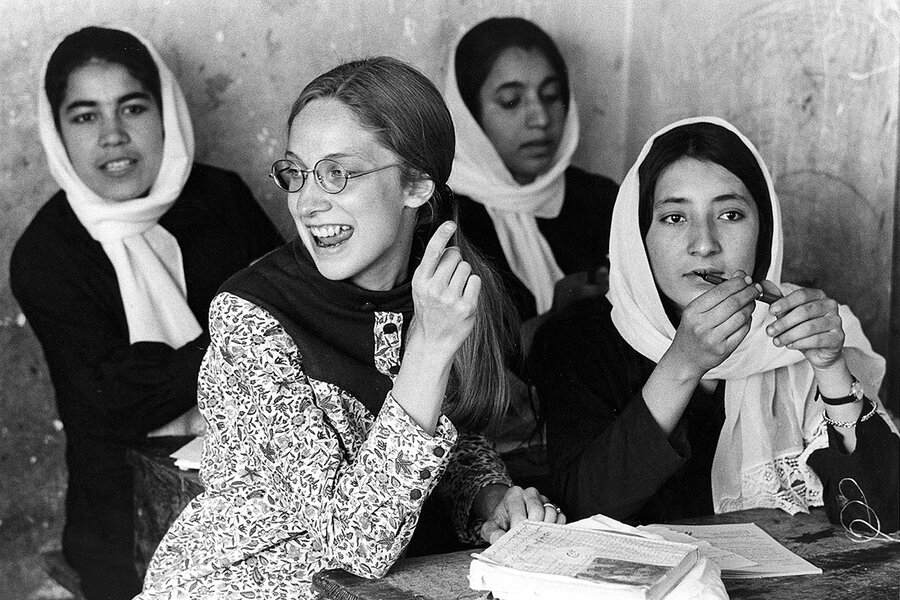
These debates have become particularly urgent now, as the Peace Corps prepares for the biggest reset of its life – returning nearly 7,000 volunteers to “the field” – which it hopes to begin in early 2022. But the world these new Peace Corps volunteers walk into will not be the same one that volunteers like Ms. Smith walked out of last year. Internationally, the pandemic has reshaped the globe, shifting how countries think about health, development, and the interconnectedness of people. And domestically, the Black Lives Matter movement has called for Americans to examine their own role in maintaining a world stratified by race and privilege.
As the Peace Corps cracks open its shutters again, many are asking hard questions. This is an organization meant to share American values with the world – but whose values are they? In a post-pandemic world, what does the Peace Corps want to be?
One morning in early March 2020, Calvin Yahn hopped onto his bicycle and began the 45-mile ride into town.
For nearly two years he’d been an agricultural volunteer for the Peace Corps in Kasamba, a small farming community in rural Zambia. Mostly, his days were filled with starting a beekeeping project, attending village meetings, and helping teachers at a nearby school with AIDS and malaria workshops. He loved the work, but his community was remote, and town, a place called Mkushi, was where he had to go when he needed an internet connection or wanted to chat in rapid-fire English with one of his fellow volunteers in the area.

Recently, though, the outside world had started to press in. A dangerous virus that had been discovered three months earlier in China was quickly spreading around the world. Countries, including the U.S., were contemplating wide-scale shutdowns of schools and businesses.
In rural Zambia, all of that still felt unfathomably far away. But that morning, when Mr. Yahn reached the paved road to town, he stopped to check his phone. He found an email from the Peace Corps. Mr. Yahn, along with all 7,000 of the organization’s global volunteers, would be evacuated immediately. Three days later, he was on a flight back to the U.S. His service was over.
Since the first fresh-faced cohort of Peace Corps volunteers left for Ghana and Tanzania in 1961, the world has never been without the organization’s earnest (mostly) young do-gooders, fanned out across some of the world’s poorest communities to try to make life there a little better. The program has always been an unusual hybrid – part development aid, part cultural exchange, part gentle diplomacy. Volunteers, in other words, aren’t just there to help teach English or organize local clinics. They’re also meant to share America with the world and create a coterie of Americans in sync with the needs of faraway places.
“You’re walking alongside people [you’re working for] in a very fundamental way,” says Carol Spahn, who served in Romania as a business development volunteer in the mid-1990s, just after the fall of communism, and is now the Peace Corps acting director. “It takes a long time to get to the point where you can speak the language and relate. I think that’s really profound.”
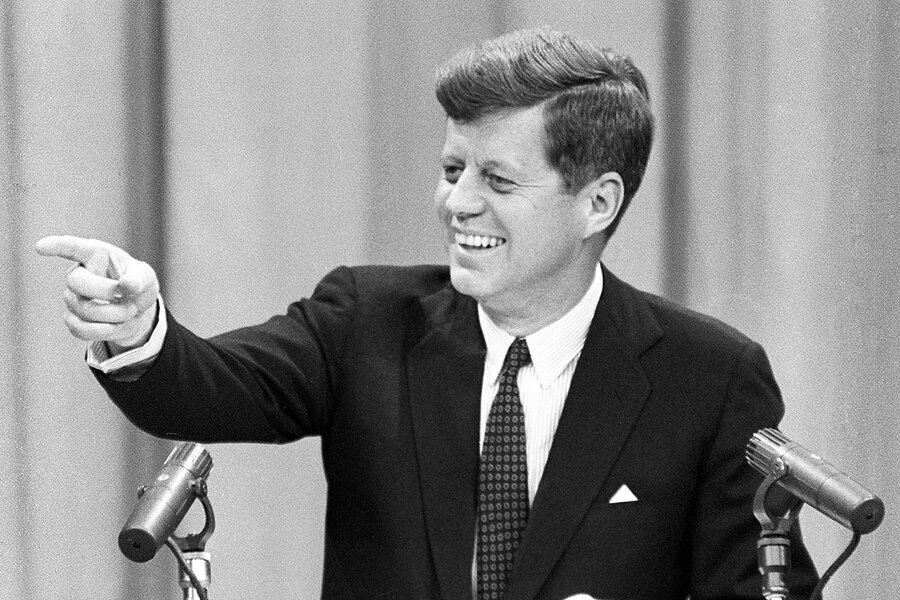
That model goes back to the organization’s Cold War founding. At 2 a.m. one October night in 1960, presidential candidate John F. Kennedy stood in front of 10,000 students at the University of Michigan in Ann Arbor and asked the buzzing crowd, “How many of you who are going to be doctors are willing to spend your days in Ghana? Technicians or engineers, how many of you are willing to work in the foreign service and spend your lives traveling around the world?” He paused. “On your willingness to do that ... to contribute part of your life to this country, I think will depend the answer whether a free society can compete.”
By free society, of course, he meant a noncommunist one, and the program was in many ways a response to the headlines of young people with specialized skills departing the Soviet Union and Cuba to serve in the developing world.
America needed its answer to that. And when Kennedy became president, the Peace Corps was it. The organization was exactly the kind of feel-good diplomacy that Cold War America needed abroad.
But its aims often also moved in lockstep with U.S. foreign policy. In the 1980s, the world’s largest Peace Corps delegation was in Honduras, a reward for letting the Reagan administration set up a base there to attack the Sandinista government in neighboring Nicaragua. Volunteers rushed into Eastern Europe after the fall of communism. In early 2020, congressional Republicans successfully petitioned to have the Peace Corps’ China program shut down because the country was “an adversary of the United States.”
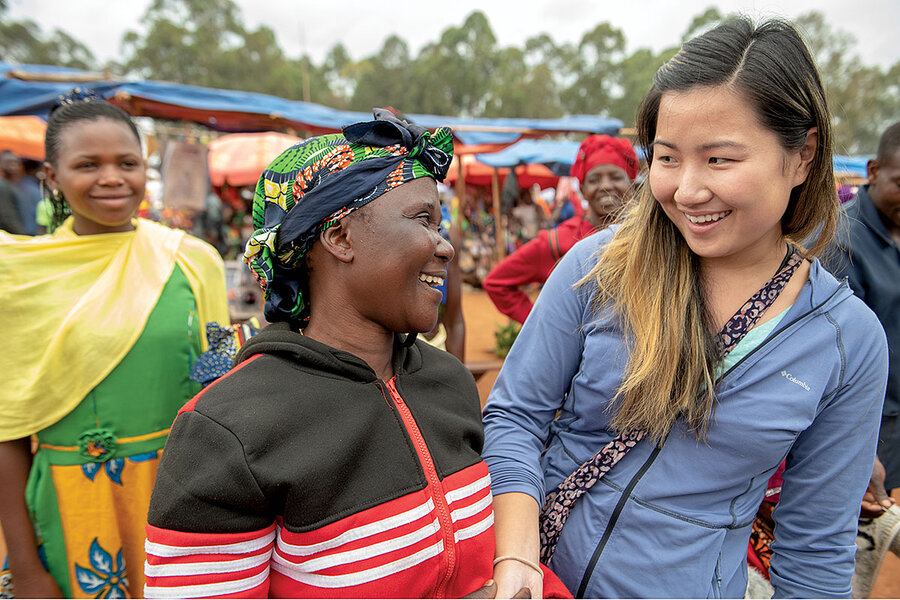
Still, wherever the organization went, it looked wholly unlike other kinds of aid America was exporting. Instead of bureaucrats sitting in air-conditioned offices cloistered in capital cities, the face of the Peace Corps was a Birkenstocks-wearing 20-something earnestly running after-school theater programs and raising funds for new wells.
“Anyone who’s worked in development can see that this is a different approach,” says Mamadou Diaw, who worked for the Peace Corps in Senegal for 27 years. “Most development is very top down, very bureaucratic, and only a small amount [of aid] actually gets to people on the ground. The Peace Corps is the opposite.”
But the model of sending American young people without specific expertise overseas to do development work has always drawn skeptics. Peace Corps volunteers live in the communities where they work and survive on a budget similar to that of locals. They are given a few brief months of language training, but often arrive with shaky communication skills and surface-level knowledge of local culture.
“There were many who criticized the naive nature of the Peace Corps from its founding,” says Alan Price, director of the John F. Kennedy Library and Museum in Boston and former associate director of management at the Peace Corps. “How can people do great things with few resources in complicated places?”
But for the Peace Corps, that’s partly the point. In addition to doing development work, it exists to teach Americans about the world – and the world about Americans.

“My attitudes changed towards foreigners because you could see that these were people who came from somewhere well to do, and they were prepared to be among us, mix with us, work with us,” said Anastasia Msosa, the first female chief justice of Malawi, in a 2015 interview with the Peace Corps. She grew up in a rural part of the country, and says the Peace Corps volunteer at her school “helped me to have dreams” of a world beyond her small town.
At the same time, being embedded in communities forces Peace Corps volunteers to go deep on the kind of unsexy, pragmatic aid projects that often struggle to attract outside support.
In Kédougou, Senegal, for instance, more than 400 miles away from the capital, Dakar, Soulayeman Ngom is patiently awaiting the return of Peace Corps volunteers. The remote region lacks many amenities. Until recently, the national highway in the area was a dirt road, which volunteers and Senegalese alike had to brave in overnight buses and crammed station wagons. Few people have access to a doctor.
In an effort to expand health care in the region, Mr. Ngom, a nurse, has worked with two Peace Corps volunteers to show local teachers how to administer malaria tests at schools. Dodging rainstorms and oppressive heat, they helped local health and education officials recruit candidates for training, prepare grants, and hammer out lesson plans. Countless phone calls, WhatsApp messages, and bicycle commutes later, teachers from 33 schools assembled at Mr. Ngom’s clinic and two others for the workshops.
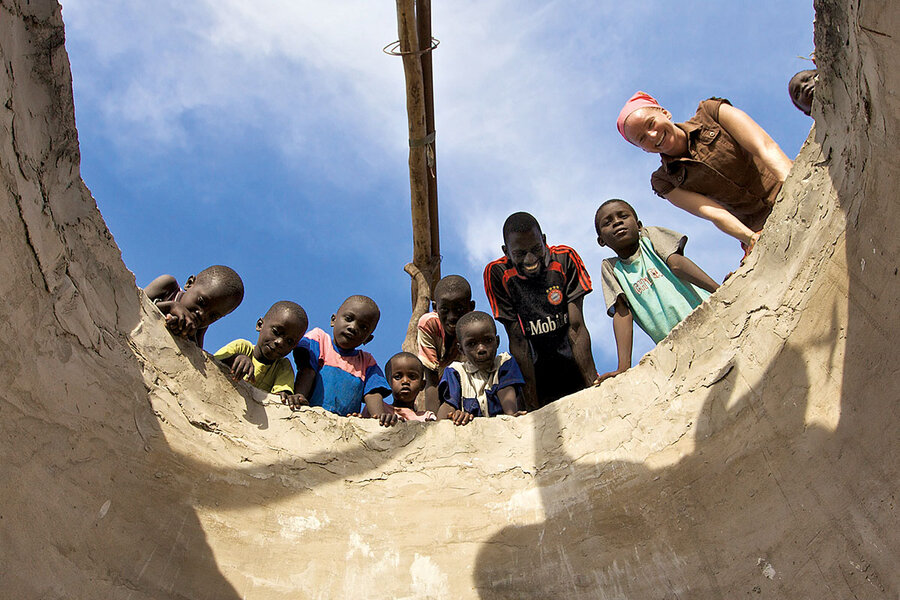
As a result, more than 1,000 new cases of malaria were detected and quickly treated during the 2018-19 school year, in a region where most cases go undiagnosed. Mr. Ngom says it “absolutely” helped lower the mortality rate.
Yet not everyone sees the Peace Corps’ presence in their communities so positively. Cleiton Fernando Pinto Celestino, a development studies lecturer who has seen many Peace Corps volunteers stream through his hometown of the Island of Mozambique, off the country’s northern coast, says he has long been struck by how little volunteers know about a place when they arrive.
He has watched workers struggle to interact in basic Portuguese and local languages, and says he felt many simply gave up and did little service.
“I think it’s necessary to send people who at least know something about where they’re going. They need the skills for that specific environment,” he says. Instead, the Peace Corps seemed to be offloading “young people who come with their parents’ intentions – they just want to help Africans.” That kind of thinking troubled volunteers Lindsay Allen and Margaret Haskopoulos during their service in Mozambique. What are we doing here? they often wondered. And whom are we helping?
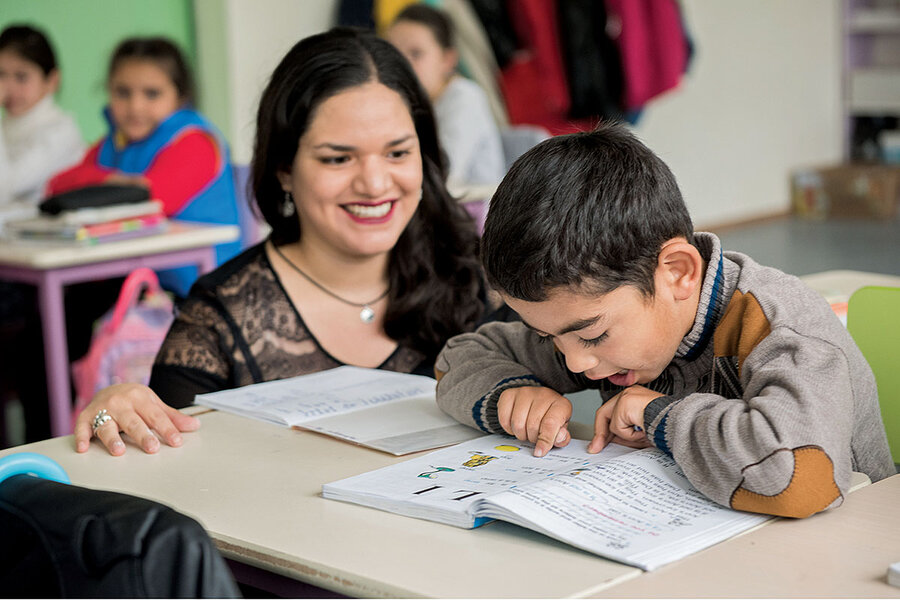
At the same time, the other side of the Peace Corps – its focus on sharing America with the world – began to concern them, too. When the pair were evacuated in March 2020, they decided to start an Instagram page called Decolonizing Peace Corps, with a radical goal – to shut the organization down.
“The Peace Corps asked us to do culture days, but they insisted we didn’t speak about politics,” says Madorah Sesay, a former Peace Corps volunteer in Namibia who was also part of the organization’s leadership. “So I could share Christmas or Valentine’s Day, but not the experience of what it’s like to be Black in America.”
To make the world more equitable, they argued, the U.S. needed to stop sending Americans to “help” the developing world.
The page quickly attracted a following – and considerable controversy – among other Peace Corps volunteers. But it gained momentum outside the organization, too.
On May 25, 2020, about two months after the Peace Corps’ mass evacuation, Derek Chauvin and three other Minneapolis police officers confronted a Black man named George Floyd outside a convenience store after a store clerk accused him of passing a $20 counterfeit bill. At one point during the arrest, two officers wrestled Mr. Floyd to the ground, and Mr. Chauvin, who is white, pinned his knee on Mr. Floyd’s neck until he stopped breathing.
The murder touched off a wave of protests across the U.S. Black Lives Matter activists demanded a reckoning around race in institutions across society, from police to governments to private companies.

The Peace Corps was not spared. Grassroots social media groups began circulating petitions, demanding to know what the organization intended to do differently going forward. As online conversations spread, they sometimes got heated. What was a life-changing experience for some was a sham to others – a bunch of well-meaning but inexperienced volunteers in far-off lands.
In response, the National Peace Corps Association (NPCA), a group led by ex-volunteers that acts as a nonprofit and lobbying group in Washington, began a series of town halls, where it gathered former volunteers virtually to discuss the organization’s future.
The conversations were at times uncomfortable. Reexamining the program meant forcing people to ask if their life-defining experience did any good for the world.
Marieme Foote, who participated in the meetings, was following in her father’s footsteps when she arrived in Benin in 2018. Her dad had been a volunteer in Ethiopia in the 1970s, when Peace Corps service “was like this radical, cool concept,” she says – especially, at the time, for a Black man.
Listening to the passionate town hall debates on Zoom, Ms. Foote was brought back to her time in Benin, huddled around a laptop with her work partner, translating portions of textbooks and videos into local languages so residents could learn new agricultural techniques. She was also brought back to a program that she found slow to catch up to a diverse, changing America.
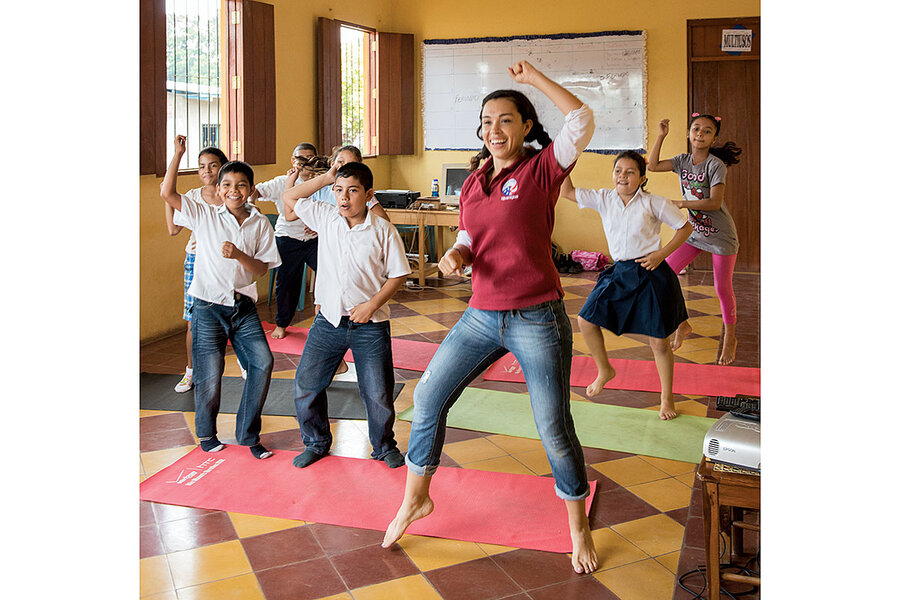
“You have more people joining the Peace Corps that never thought in the past that the Peace Corps was a possibility for them,” for both racial and economic reasons, she says. “A lot of the issues that volunteers have in the U.S., we carry that abroad with us – so how do we tackle issues of discrimination and all that stuff when we travel abroad?”
Participants aired other issues at the town halls, including stories of volunteers arriving in villages thinking they were saviors – there to teach but not to learn. To Ms. Foote, though, these problems are solvable. The question for her is, “How do we make Peace Corps this radical, cool thing in terms of interacting with people and working with people?”
In November, the NPCA put out a report, “Peace Corps Connect to the Future,” that said a significant majority of former volunteers wanted the organization to continue, but also that it was ripe for reform. It called for combating systemic discrimination, recruiting diverse volunteers, and putting greater emphasis on cultural exchanges. It also suggested the U.S. could “benefit greatly from partnerships with volunteers from countries where the Peace Corps is currently operating,” and encouraged exploring a “reverse Peace Corps,” in which foreigners come to the U.S. to do volunteer work.
“I would say many volunteers go abroad thinking they’re going to save the world, and/or thinking they’re there to help others become like us or become whatever ‘developed’ is,” says Glenn Blumhorst, president of the NPCA, based on conversations he had at the town halls. “I think the way Peace Corps programs in many ways were designed was not always in the right partnership approach that there needed to be. And I think that’s what a lot of volunteers saw.”
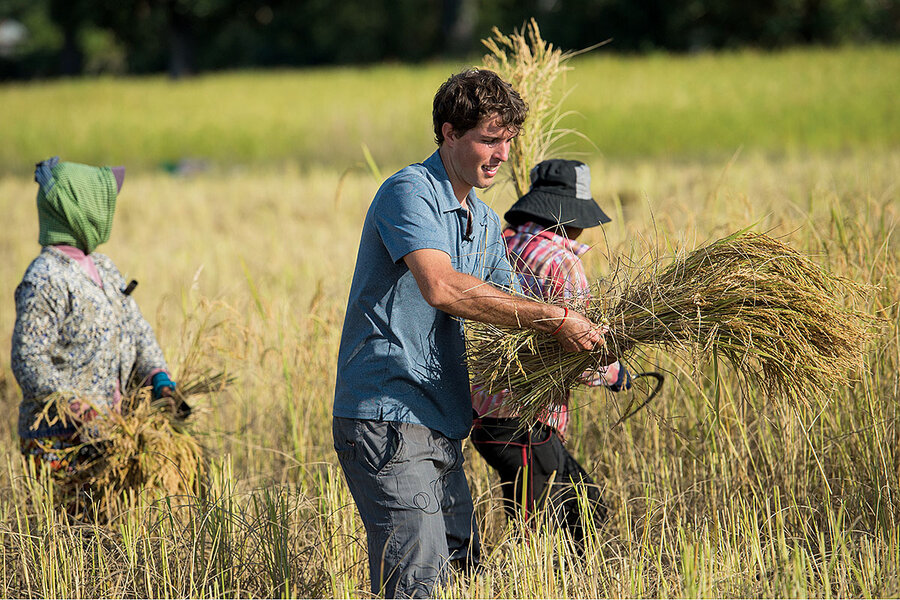
Yet the most existential threats to the organization in recent years have not come from left-wing critics or starry-eyed reformers from within, but from skeptics on the outside – notably congressional Republicans.
In June 2019, for instance, then-Rep. Mark Walker of North Carolina proposed a measure that would have slashed foreign aid, including all funding for the Peace Corps. “I just introduced my amendment to put #AmericaFirst by cutting foreign aid to help fund disaster assistance and recovery,” Mr. Walker said in a tweet, just before the House took up the measure. It was defeated in a bipartisan vote, but 110 Republicans ended up supporting the measure.
“If you look back historically on the Peace Corps, it’s not the first time it’s been threatened,” says Mr. Blumhorst. The Nixon years weren’t friendly. At other times the Peace Corps was sidelined for other priorities, he says. Still, the inward, “America First” bent of the Trump years, with its recurring threats to the Peace Corps budget, represented something new, and the former president’s views on foreign aid remain strong among Republicans.
“There could be a perfect storm of conditions that could seriously threaten the Peace Corps: an administration that wasn’t friendly to taking our values abroad, for example, and more of an isolationist agenda,” Mr. Blumhorst says.
Still, one of the organization’s biggest challenges going forward may not be funding, but finding its place in a world fundamentally different from before March 2020.
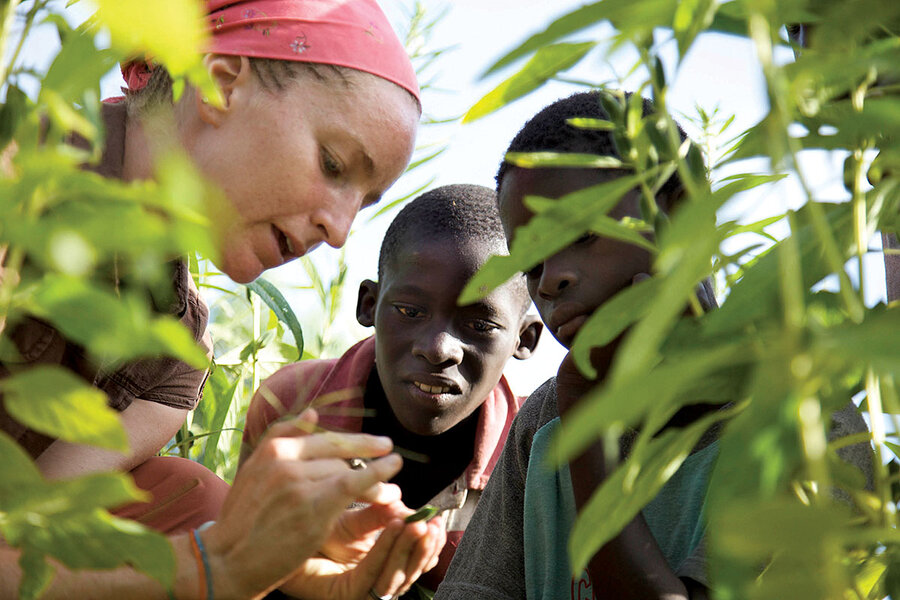
“It’s a profound moment in global history – never before has every country in the world been impacted at the same time by a virus,” says Ms. Spahn, the acting Peace Corps director. “The Peace Corps is about connectedness. It’s about world peace and friendship. All of that has been put on hold and challenged at the community and national and international level.”
The organization says it’s working toward sending volunteers out again in early 2022, if the pandemic doesn’t delay that timeline further. In the meantime, no matter what the organization’s future, many volunteers have found that working overseas has clarified their path forward personally.
Earvin Casciano was in his first year of Peace Corps service in Fiji when another volunteer said she thought he’d make a great social worker. It was a job he’d never considered, but now, as he reflected on it, the idea seemed perfect. He loved helping people fine-tune their lives.
“A lot of people take the Peace Corps as an opportunity to party and travel around,” he says. But for those who are serious about the work, it can be a singular formative experience.
Just before he was spirited home in March 2020, Mr. Casciano helped finish a cyclone evacuation center in his town’s community hall. When major storms hit, residents often struggled to come up with the bus fare to travel to the nearest shelter. Instead, they stayed home.
So Mr. Casciano applied for a small grant from the Peace Corps to outfit the community center with stormproof windows, and a kitchen and bathroom for overnight stays. Now, residents could take cover there.
It wasn’t much, as far as development projects go. Not a bold new idea. Not a flashy execution. Just a small corner of a tiny island thousands of miles from Mr. Casciano’s New Jersey hometown, made a little better by his presence.
Nick Roll, who contributed to this report, was a Peace Corps volunteer in Senegal from 2018 to 2020.

Patterns
Will submarine rift sap Europe’s support for US policy on China?
Relationships are built on trust and communication. Our London columnist explores the rift between France and the U.S., and whether the breach may lead to less cooperation on China.

- Quick Read
- Deep Read ( 4 Min. )
The row that has broken out about Australia’s decision to scrap a deal to buy French submarines and switch to U.S.-made vessels – a move that Paris calls a “stab in the back” – is about more than French amour propre.
It risks opening even deeper fissures in the transatlantic alliance, the bedrock of U.S. foreign policy for more than seven decades.
The way Australia, the United States, and Britain had negotiated in secret for months to create a new security alliance dubbed AUKUS; the way neither European Union nor NATO allies were forewarned of the announcement; all that smacked of the way they had been left out of the loop on last month’s U.S. withdrawal from Kabul, Afghanistan.
That has left some in Europe wondering whether they can rely on Washington anymore, and it has reinforced arguments that the Europeans should take a more independent foreign policy tack on issues such as China, rather than let America take the lead.
As President Joe Biden seeks to rally allies into a democratic front against autocratic leaders such as China’s Xi Jinping, Europe’s overall aim, said EU foreign policy chief Josep Borrell last week, is “cooperation, not confrontation.”
Will submarine rift sap Europe’s support for US policy on China?

First came the verbal brickbats, accusations of “lying, duplicity … treachery!” Then the dramatic recall of an ambassador from Washington.
Yet it wasn’t the pace, nor even the passion, of last week’s démarche against the United States that was most extraordinary. It was the source.
It didn’t come from a rival such as Russia or China, but from America’s oldest international ally, France. Ties with Europe are already strained; this new diplomatic firestorm risks opening even deeper fissures in the transatlantic alliance – the bedrock of U.S. foreign policy for more than seven decades.
France is not the only European Union member of NATO to be asking itself whether the old continent can rely on Washington with the same certainty as before. And the doubters are now wondering whether they should adopt a more independent tack on their own security, and on key foreign policy issues like China, rather than let America take the lead.

The spark for the latest tension was the announcement of a new alliance – dubbed AUKUS – under which the U.S. and Britain will provide nuclear-powered submarines to Australia and jointly develop other high-tech military and intelligence tools for deployment in the Indo-Pacific region.
That meant the summary cancellation of a deal between the Australians and the French, for conventional, diesel-powered submarines. In practical terms, France lost nearly $66 billion in business, and many of the jobs relying on it.
But it wasn’t just those issues that provoked France’s fury – and the first withdrawal of its chief envoy to Washington since the French sided with the American Colonies in the Revolutionary War.
Rather, it was the manner in which the rebuff was delivered – a “stab in the back,” Foreign Minister Jean-Yves Le Drian called it. AUKUS emerged from months of top-secret negotiations that kept Paris in the dark. France first heard of the deal from Australia, hours before the formal White House announcement last Wednesday, and after the news had leaked in the news media.
The EU wasn’t given notice either. Nor, it appears, was NATO. And that struck an especially raw nerve: EU states and NATO’s European members are still smarting from being left out of the loop on last month’s rapid U.S. withdrawal from Kabul, Afghanistan.
The overall effect has been to gut the initial view in European capitals that President Joe Biden would quickly repair the transatlantic bonds that President Donald Trump had so denigrated. “This brutal, unilateral and unpredictable decision reminds me a lot of what Mr. Trump used to do,” Mr. Le Drian declared.
The hope in the U.S. is that France’s anger will gradually subside. Mr. Biden called President Emmanuel Macron on Wednesday and the two men agreed to "open a process of in-depth consultations, aimed at creating the conditions for ensuring confidence."
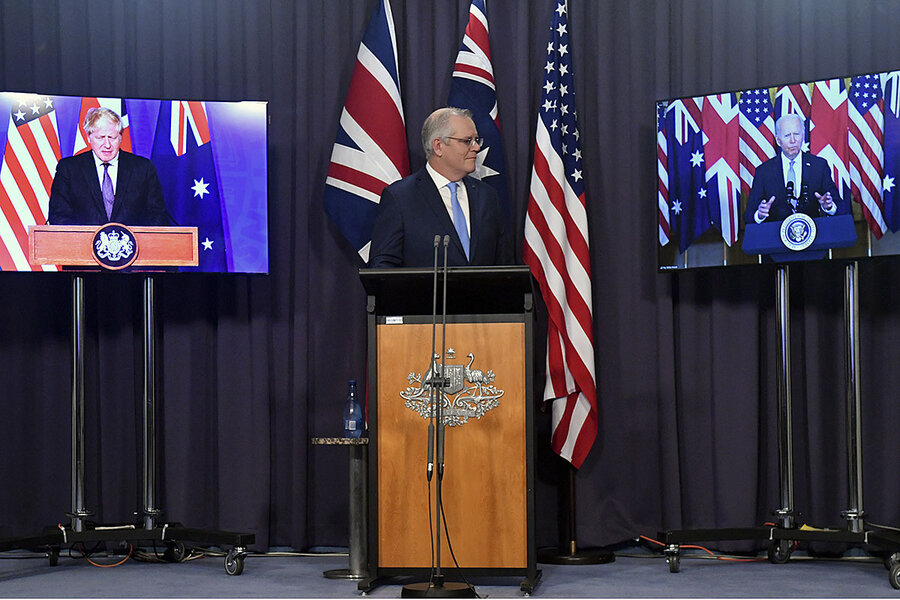
But the substance behind AUKUS is likely to prove tougher to finesse: a new, Anglo-Saxon security alliance whose European member has chosen to leave the EU, aimed clearly at China. And China is now Washington’s absolute foreign-policy priority, whatever Europeans may think about that.
For Mr. Macron, the logical European response is clear. He has long been pressing EU colleagues to forge greater “strategic autonomy” from the Americans. During the Trump years, he went so far as to pronounce NATO “brain-dead” – a remark he recanted during Europe’s early diplomatic honeymoon with the Biden administration.
His argument has been gradually gaining support among some other EU states. It will have been strengthened by the way the U.S. sidelined the Europeans in Afghanistan, and by AUKUS.
But there’s a major caveat: “strategic autonomy” costs money. It means a commitment to far higher defense spending than most European countries have so far been ready to countenance. And it’s worth noting that no other European leaders have rushed to echo Paris’ angry denunciations of Washington over AUKUS.
But that does not necessarily mean that they are ready to follow what Mr. Le Drian calls the “highly confrontational orientation” toward Beijing that Washington has adopted, especially since the EU had been working on its own strategic plan for the Indo-Pacific region, which it unveiled last week.
“We regret not having been informed” about AUKUS, said the EU’s foreign policy and security commissioner, Josep Borrell. “We must survive on our own, as others do,” he added.
France itself is already a key player in the Indo-Pacific, home to some 1.6 million of its citizens in overseas territories defended by 8,000 soldiers and a naval force, including nuclear submarines.
The EU document set out plans for possible naval deployments by member states to “help protect maritime lines of communication and freedom of navigation,” a veiled reference to stymieing Chinese maritime ambitions.
But the plan’s tone and emphasis were markedly different from Washington’s increasingly tough stance toward China – in part, perhaps, because EU states may be more reluctant to risk their valuable trade and investment ties with Beijing.
As President Biden seeks to rally allies into a democratic front against autocratic leaders such as Xi Jinping, Europe’s overall aim, said Mr. Borrell, was “cooperation, not confrontation.”

Hurricane Ida aftermath: Will power grids get an upgrade?
One takeaway from recent major U.S. storms, our reporter finds, is the need for greater power grid resilience. He explores how that might happen.
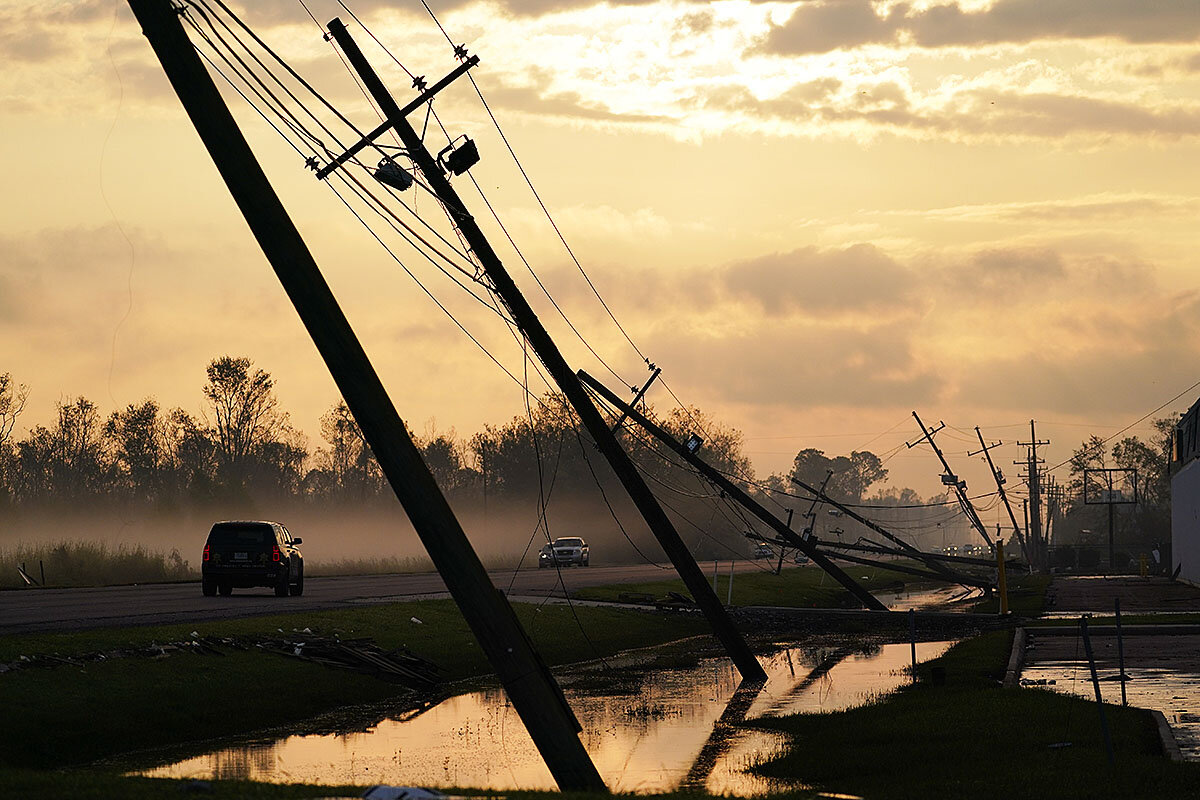
- Quick Read
- Deep Read ( 6 Min. )
-
By Xander Peters Special correspondent
When Hurricane Ida knocked out power for about 1 million Louisiana customers, amid sweltering heat and humidity, it was part of a larger pattern. Extreme weather events, which scientists say are being amplified by climate change, have threatened communities and their power grids in other parts of the United States.
The result is an awakening by citizens and policymakers alike that power grids need attention – not just repair, but perhaps re-imagining to withstand future extremes.
Investments can help harden the grid by reducing potential points of critical failure, putting lines underground where feasible, and adding redundancy.
But all this is costly. And on top of investments in resilience, by some estimates America needs to spend $370 billion or more per decade in new capacity for power distribution, as the nation relies more on renewable power for things like automotive transport.
“Our energy system is fragile,” says Michael Webber, a professor of energy resources at the University of Texas. “In Texas, it costs $5 billion to $20 billion to winterize the energy system," but the move promises to avoid multiples of that amount in damage from storms like one that hit the state early this year. “The cost of inaction,” he says, “is pretty expensive.”
Hurricane Ida aftermath: Will power grids get an upgrade?
Sweeping through southeastern Louisiana on Aug. 29, Hurricane Ida knocked out power for about 1 million customers – not far off the record seen in this state with Hurricane Katrina in 2005.
New Orleans residents waited for five days in sweltering heat and humidity. Weeks later, the power remains out in parts of some of the hardest-hit communities, such as in LaPlace and Grand Isle.
And the Bayou State’s struggles fit a larger pattern. Extreme weather events, which scientists say are being amplified by climate change, have threatened communities and their power grids in other parts of the United States.
Some California residents have faced power shut-offs designed to reduce the risk of spark-ignited wildfires. In Texas, more than 4.5 million homes and businesses lost electricity as harsh winter storms in February literally froze up some power sources. Some citizens were left to burn books and newspapers in their homes to keep warm.
A common thread across these events has been an awakening by citizens and policymakers alike that power grids need attention – not just repair but perhaps re-imagining. Needed changes may include modifying or expanding transmission networks to withstand future extremes, at a time when experts say big investments are also needed as part of a transition toward cleaner energy in response to climate change.
“We need to invest in a modern, updated, resilient grid. Just pursuing whatever's cheapest is what we've done for decades,” says Michael Webber, a professor of energy resources at the University of Texas. “I think we’re paying the price for that now.”
Dr. Webber and other experts see some broad lessons as states in the Gulf Coast region and beyond move forward.
1. Costs are rising. Delay won’t help.
A recent report by the World Meteorological Organization found that in the 1970s, there were only 711 cases of extreme droughts, storms, and heat waves globally. By the 2010s, that number had increased by more than 400%, with at least 3,165 extreme weather events. In that time, the price tag, adjusted with inflation, had also increased from $49 million a day to $383 million a day.
In 2011 Texas experienced a precursor to this year’s winter storm. A hard freeze caused equipment failures at 241 power plants across Texas, resulting in blackouts for about 4.4 million customers.
The state Legislature did nothing in the subsequent session to prevent a repeat.

“This time, they did something,” Dr. Webber says, including a bill that requires power companies and natural gas companies to upgrade their facilities to withstand extreme weather events. The bill also requires regulators to enact an emergency alert system for power outages.
Even so, many Texans still saw the state lawmakers’ action as inadequate given the severity of the winter storm crisis earlier this year.
2. Resilience is a rising priority
No one expects the ability to make electric transmission lines 100% impervious to storms like Ida, which pummeled Louisiana with winds as high as 150 mph. But experts say infrastructure needs to adapt to changing conditions.
In some cases, that means power customers taking the issue into their own hands. In Ida’s wake, many homeowners as well as hospitals and some gas stations were able to rely on generators to keep some power available. Some people had solar systems and the ability to store that renewable power in batteries for their personal use.
In California and elsewhere, so-called microgrids are another rising form of resilience, setting up renewable or other power sources that can often keep operating in “island mode” when larger power networks are impaired or down.
“The problem with solar in Louisiana is it rains a lot,” says Eric Smith, associate director at Tulane University’s Energy Institute.
But power-source diversification helps, even if Louisiana may not ever boast nation-leading solar output. And many rooftop panels in the state weathered Ida’s winds successfully.
Another source of resiliency can be energy-sharing programs between neighboring states, Mr. Smith adds. Texas in particular would have benefited from such a program back in February, when the winter storm hobbled the state as its isolated grid went down.
“It would have been nice to lean on our neighbors a little more,” Dr. Webber says of the winter storm’s impact on the Lone Star State’s grid. “We didn’t have that option for the most part.”
Mr. Smith says it would help Louisiana as well as Texas: “It doesn’t make for an efficient grid if you have a winning buyer and a winning seller. You have a robber baron attitude and the state is in the middle. That’s something you ought to be able to fix.”
3. Don’t expect easy fixes
On Labor Day, Louisiana’s troubles were so bad that electric utility Entergy had deployed 26,000 workers to fix downed lines and bring lights back on for customers across the state. Is there a better way?
Investments can help harden the grid, for sure – such as reducing potential points of critical failure, putting lines underground where feasible, and adding redundancy. But none of these are a guarantee. During Ida, for example, all eight key transmission lines to New Orleans went down.
“We can put the power lines above ground, but they’re more susceptible to damage from wind events and falling trees and flying debris. We can put them underground, and now they can be damaged by water incursion, storm surge, and flooding,” says Ted Kury, director of energy studies at the University of Florida’s Public Utility Research Center.
Sturdier aluminum poles can be used instead of standard pine ones for poles that carry electrical wires and energy for miles. But that adds costs, especially when utilities have responded after storms to replace wooden poles as quickly as they can.
“You can defend for the next event,” says David Dismukes, executive director of Louisiana State University’s Center for Energy Studies. “But now that we’ve literally rebuilt the system in some places, are you going to want to tear that down and make it harder after you’ve already paid top dollar for getting it done now?”
Still, Dr. Kury says the goal should be to build infrastructure in a way that keeps the response costs low.
Once an extreme weather event occurs, “most of the job is making sure people get the lights back on,” Dr. Kury says. “But once the storm is through, once that damage has been cleaned up, we still have to be talking about what we can do to make the grid more resilient. That’s when we get change.”
4. Who pays? Everyone.
The price tag for all this is up for grabs. But utility ratepayers or taxpayers – in other words, all of us – will be footing the bills.
On top of investments in resilience, by some estimates America needs to spend $370 billion or more per decade in new capacity for power distribution, as the nation relies more on renewable power for things like automotive transport.
Bills supported by President Joe Biden, if passed by Congress, would pour about $65 billion into power grid upgrades (an infrastructure bill) and commit another $150 billion to a transition toward 80% renewable energy (a broader spending bill).
States including Texas and Louisiana will be watching closely.
“Our energy system is fragile,” Dr. Webber says. “In Texas, it costs $5 billion to $20 billion to winterize the energy system. That sounds expensive, but it helps avoid $100 billion to $200 billion in damage” from a storm like the one that happened early this year.
“The cost of inaction,” he says, “is pretty expensive.”

For Canada’s newest First Nation, a declaration of, and fight over, identity
While victorious in the fight for Indigenous recognition and rights in Canada, a Newfoundland band is now wrestling with questions of inclusion and identity, our reporter finds.
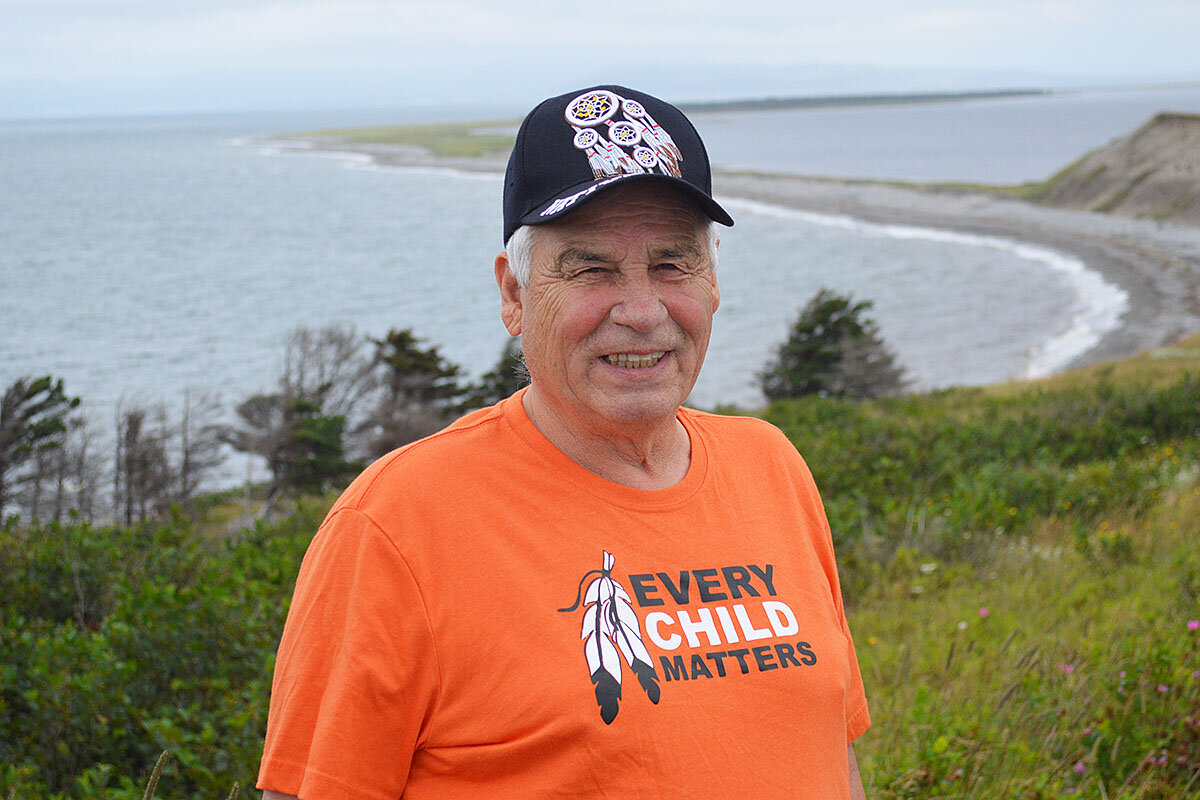
- Quick Read
- Deep Read ( 7 Min. )
Calvin White spent his adulthood fighting for recognition of his people, the Mi’kmaw community of Newfoundland. Beginning in the 1970s, he traveled across the province organizing residents into what would later become the Federation of Newfoundland Indians. And he challenged legislation before the courts that led to the creation of the Qalipu First Nation in 2011.
This week it marks its 10th anniversary. But Mr. White says the struggle for justice is more pressing than ever.
While recognition was a crowning achievement, the creation of the nation has also been mired in controversy over membership, surfacing divisive debates about identity that have split families. And looking back at the long road to recognition, Mr. White is concerned the movement has veered from its original struggle for inclusion and equity.
“I’m more engaged now in the fight than I was in the ’70s,” he says. “After 10 years, I’ve realized that the fight has gotten bigger. It’s absolutely necessary to reflect back on where we are and try to correct some of the injustices and the wrongs that we’re now faced with, not in our struggle with the federal government, but our own struggle in Qalipu.”
For Canada’s newest First Nation, a declaration of, and fight over, identity
When Newfoundland leader Joey Smallwood declared that there were “no Indians” in the province in 1949, Calvin White was very much evidence to the contrary.
He was 7 years old at the time, living in his isolated Mi’kmaw community on the southwest coast of Newfoundland. He snared rabbits with his grandfather. He fished for cod, lobster, salmon, and halibut. He learned to harvest seals and hunt moose, and above all that whatever they got was shared between all.
Mr. Smallwood’s words were incongruous with the experience of any Indigenous person in Newfoundland at the time. But as Mr. White grew, exposing their falsity became his life’s purpose, and he spent his adulthood fighting for recognition of his people. Beginning in the 1970s, he traveled across the province organizing residents into what would later become the Federation of Newfoundland Indians (FNI). And he challenged legislation before the courts that led to the creation of the Qalipu First Nation in 2011.
Meaning “caribou” in the Mi’kmaw language, Qalipu is the newest band to receive federal recognition in Canada. This week it marks its 10th anniversary, with celebrations to take place across Newfoundland.
But on a recent day at his home in Flat Bay, Mr. White, who was appointed to the Order of Canada for his advocacy, says the struggle for justice is more pressing than ever. While recognition was a crowning achievement, the creation of the nation has also been mired in controversy over membership, surfacing divisive debates about identity that have split families. And looking back at the long road to recognition, Mr. White is concerned the movement has veered from its original struggle for inclusion and equity.
“I’m more engaged now in the fight than I was in the ’70s,” he says. “After 10 years, I’ve realized that the fight has gotten bigger. It’s absolutely necessary to reflect back on where we are and try to correct some of the injustices and the wrongs that we’re now faced with, not in our struggle with the federal government, but our own struggle in Qalipu.”
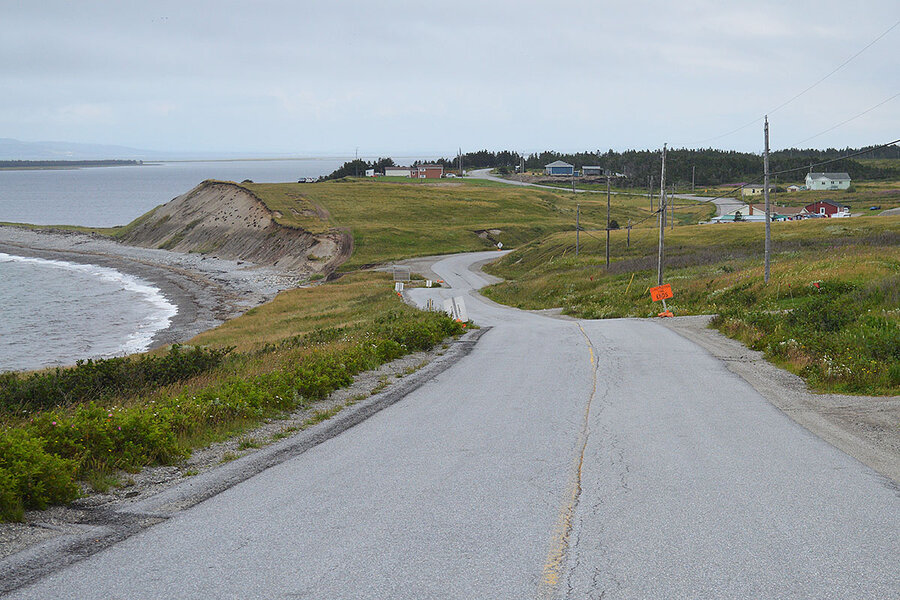
A province’s denial of its peoples
Premier Smallwood’s denial of indigeneity on the island of Newfoundland has had ramifications felt legally, politically, and culturally through to the present. Immediately it meant that Indigenous people of Newfoundland were not recognized under Canada’s Indian Act, excluding them from federal rights and benefits. In popular understanding, it made them invisible. It suggested that the Indigenous history stopped at the Beothuk, who were declared extinct in the 1800s – though that is contested today.
“The myth of extinction, this idea that when the Beothuk went extinct that there were no Indigenous people left in the province … was a sentiment that was held by a lot of people within settler colonial society,” says Katherine Morton, instructor in anti-colonial and Indigenous studies at Memorial University of Newfoundland. “So Indigenous identities were often concealed. Families were in a position where in order to be safe, they had to remove parts of their Indigenous ancestry from their family stories. … When Newfoundland entered into the country of Canada with the Indian Act never being extended, there was this enormous impact that we’re still feeling ripples of.”
Mr. White was among those determined to set the record straight. But first, he had to grapple with changes in his own community. The province was modernized when it joined Canada in 1949 – the last to do so – with new roads, jobs, and rules. Regulations around hunting and fishing had irreversible effects on traditional ways of living. It thrust families into social despair, compounded in Flat Bay by the presence of a nearby American air base that brought a corruptive force, he says.
The eldest of eight, Mr. White adapted to these changes initially. He quit school at 14 to work for a paper mill with his father, the two setting up camp in the woods. At first the job gave them the flexibility to hunt or snare between logging. But when the industry was mechanized, bringing rigid work schedules and hourly pay, he went back to school, finishing eighth grade and becoming a heavy machine operator.
That was an awakening. Away from his community for the first time, working at a hydroelectric plant in Labrador, he bore witness to the kind of discrimination that would fuel his lifelong fight. “The racism was brutal for absolutely no reason whatsoever, just because of who you were and the color of your skin.”
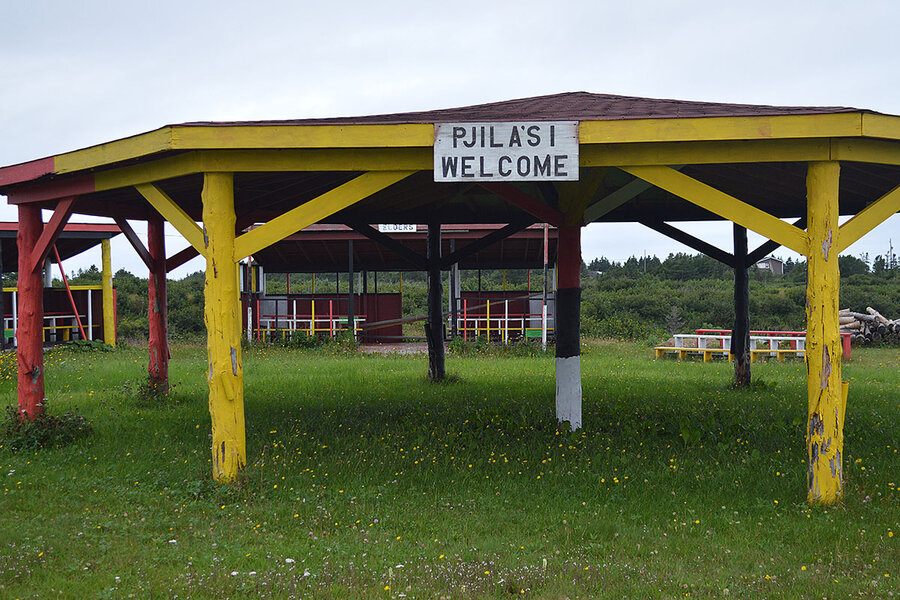
Community found and community lost
At the time, then-Prime Minister Pierre Trudeau had proposed abolishing the Indian Act with the “1969 White Paper.” Though he ended up withdrawing his proposal, it galvanized Indigenous activism across the country and set a new path for Mr. White. He became a leader in the FNI and fought for status for the Mi’kmaq of Newfoundland.
That culminated in the creation of Qalipu First Nation as a “band” under the Indian Act on Sept. 22, 2011.
Qalipu is unique because the band is “landless,” with no land claims to settle as part of its recognition, nor territory as a limit to membership. About 10,000 had been members of the FNI, and when the new band was created, 23,877 of its members were registered as founding. But then it received 70,000 additional applications – bringing the total to equivalent of one-fifth the population of the province. Overwhelmed, Canada and the FNI announced a new agreement in 2013 to clarify enrollment, kicking off a messy process to determine who is really Mi’kmaq.
Ten years later, on one hand the Qalipu First Nation anniversary marks a clear story of revival. Mildred Lavers, from the Great Northern Peninsula, knew she was Indigenous as a young girl, but it wasn’t something the family necessarily celebrated. For her, forging an Indigenous identity was almost like finding the missing piece of a puzzle. “I’d always been drawn to the natural way of life, the Indigenous way of life, to nature and being outside,” she says. “I think that put it all together for me. This is why I am this way.”
After she received status in 2013, she helped form a women’s group on the northern peninsula that focuses on cultural learning, from drumming courses to workshops on medicinal plants. She also started and is chief of a new band – one that doesn’t have federal recognition – called the Northern Peninsula (Mekap’sk) Mi’kmaq Band.
But the review process has cast a shadow. Membership is based on a points system, reducing identity to a transaction. Points are amassed depending on a specific formula, including where residents live or even how many times they’ve shopped in what was deemed a Mi’kmaw community. That meant those who may have grown up with strong Indigenous teachings but moved away for work – like so many, Indigenous and non-Indigenous, in this province – had their status taken away.
In the end, thousands have lost their membership. The case is in litigation. In the meantime it has split families apart. Ms. Lavers, for example, received points because she had joined a band several years ago and maintained her status after the review. But her two siblings lost theirs. “It’s been a very difficult process,” she says.
Frank Skeard, an elected councilor of Qalipu for Glenwood Ward in central Newfoundland, says that the membership controversy shouldn’t overshadow their successes. To go from “no Indians” in Newfoundland to more than 100,000 who want “in” is a sign of success. “A lot of people look at the enrollment issues as a bad thing. I look at it as a fantastic thing because Qalipu brought being Indigenous to the forefront, something people want to be,” he says.
“Where were those people for 40 years?”
But to Mr. White, who was also the former chief of the Flat Bay band, the very people he fought for inclusion are reliving a cycle of exclusion, while the powerful have found opportunity in a new bureaucracy.
“Everyone and their dog wants to be a Native person now,” says Mr. White. “I’m not going to suggest that all of those people are not Indian people. But I am going to tell you quite honestly, where were those people for 40 years when we were organizing their neighbors living across the street from them? They weren’t Indian, and they didn’t want to be Indian.”
His criticism has grown louder over the years; he stepped down from the board of the FNI before Qalipu was formed. Today his band, Flat Bay, has been moving toward a process in which they could break from Qalipu and fight for their own official recognition.
But in some ways he has come to realize recognition itself is not the end of the fight. Maybe it’s not even the most important part.
He says Mi’kmaw culture is one of care for others, where community comes before the individual. “A lot of them don’t understand that they have the same responsibility to a child down the road … who has experienced social destruction ... as they have to their own children,” he says. “Our vision was to inspire and promote and mentor from the grassroots up. It wasn’t about the elite becoming more powerful. Qalipu has done some really good things. But it has lost sight of the people that are most in need.”

Essay
What the Peace Corps meant to me
We return to the Peace Corps with a personal essay from a former volunteer, who suggests that learning how to bridge cultural divides with a sense of humility may be exactly what the world needs today.

- Quick Read
- Deep Read ( 3 Min. )
It wasn’t until I returned home from the Peace Corps that I noticed the Senegalese restaurant down the street. I instantly knew this was somewhere I could speak Wolof, to the confused delight of the kitchen staff.
I joined the Peace Corps in 2018 for the opportunities: to experience West Africa, to improve my foreign language skills, and to do some meaningful work along the way. I never thought lessons learned there would be applicable back home. But here I was, in my hometown of Cincinnati, speaking Wolof with a set of neighbors I had never known I had before.
The Peace Corps has always had two missions: to build literal bridges through volunteer work, and to build more figurative cultural bridges. One can easily log the number of wells built or mothers trained in nutrition classes. It’s harder to measure the impact of cultural exchange carried out, cross-border friendships made possible, or worldviews expanded.
In many ways, the figurative bridges that the Peace Corps builds are exactly what today’s divided yet shrinking world needs a heavy dose of. The challenge for the program will be making sure its ideals are being lived out in the field, and not just on paper in Washington.
What the Peace Corps meant to me

It wasn’t until I returned home from the Peace Corps that I noticed the eatery down the street from my house. The white sign read “Darou Salaam Restaurant.” Like many Senegalese restaurants trying to make it in America, it promises “African food” and “food from all over the world.” It eschews the specificity of a West African country most people haven’t heard of for mass appeal.
I had never even noticed the place before. But now, I instantly knew this was somewhere I could speak Wolof and order a plate of thieb, a local dish made with fish, vegetables, and rice. I proceeded to do both, to the pleasure and confusion of a kitchen staff who’d never seen a white American speak their language.
I joined the Peace Corps in 2018 for the opportunities: to live in and learn about West Africa, to improve my French, to learn a new language on top of that, and to do some meaningful work along the way. While adjusting to life in a rural village, I never thought lessons learned there would be applicable back home. But here I was, two neighborhoods over from my childhood home in Cincinnati, speaking Wolof with a set of neighbors I had never known I had before.
If my time in Senegal was the Peace Corps at its best, Wednesday’s lead story, which I co-wrote with our Johannesburg-based staff writer Ryan Lenora Brown, probes a bit deeper. We find global citizens and do-gooders, yes, but also people who are disillusioned, unsure if their work is actually helpful, and questioning what representing America means in such a divided age.
The Peace Corps has always had two missions: to build literal bridges through volunteer work, and to build more figurative cultural bridges. In many ways it’s been successful. In many ways it hasn’t. What I learned reporting this story was the danger of generalizing, whether positively or negatively. No single experience with the program seemed to be universal.
Amid drastically competing visions for the program, then, what is the Peace Corps supposed to do? There’s no shortage of ideas. In the Senegalese capital, Dakar, where I live now, I was out recently with some other former Peace Corps volunteers. We debated whether the organization should exist and whether it was effective – a classic Peace Corps pastime. In some ways, it felt a bit rich – benefiting from the program, moving to Dakar, and then pondering whether we should pull up the ladder behind us. But most crucially, we debated what we meant by “effective.” One can easily log the number of wells built or mothers trained in nutrition classes. It’s harder to measure the impact of cultural exchange carried out, cross-border friendships made possible, or worldviews expanded.
In many ways, the figurative bridges that the Peace Corps builds are exactly what today’s divided yet shrinking world needs a heavy dose of. That can only happen if volunteers coming into the program bring humility, rather than elitism or saviorism. The challenge for the Peace Corps will be making sure its ideals are being lived out in the field, and not just on paper in Washington.
What I know is that I wouldn’t trade my experience for anything. And I hope, when speaking Wolof in Cincinnati, that I can light that same spark in my Senegalese neighbors as I felt on the rare occasions in Senegal when I had the opportunity to speak my language, English – a feeling of instant relaxation, and a sense that I belonged.
Other headline stories we’re watching
(Get live updates throughout the day.)The Monitor's View
One victory over the pandemic: Community gardens
- Quick Read
- Deep Read ( 2 Min. )
-
By the Monitor's Editorial Board
When the American Community Gardening Association holds its annual conference this week, one goal is to “share stories of how gardens made a difference during the pandemic.” For sure, topics like composting and urban food deserts will be discussed. But with a surge in renting garden plots this year, organizers want a focus on how community gardens have been a source of resiliency, or a reaping of stronger ties between neighbors during a tough time.
Working garden plots together has been a way for people to break the pandemic’s isolation as well as ensure a supply of food. Shared gardens are a mirror on what a community stands for. They must operate on golden-rule economics, challenging the theory that humans will secretly exploit a shared resource, or what is called the “tragedy of the commons.”
Today’s community gardens, born out of the victory gardens of last century’s world wars, keep offering fresh purposes beyond just providing fresh and inexpensive food. In challenging times like a pandemic, they offer a harvest of insights on what holds a community together.
One victory over the pandemic: Community gardens
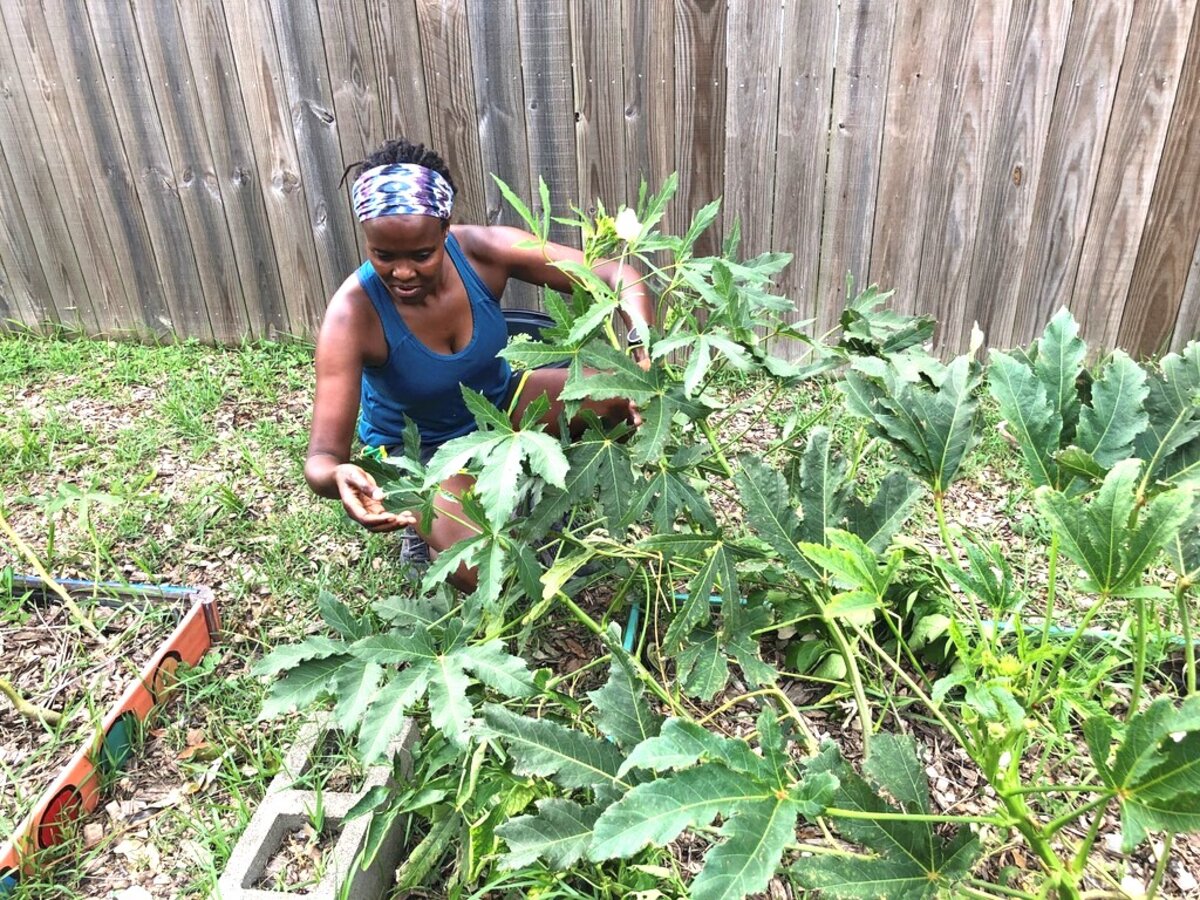
When the American Community Gardening Association holds its annual conference this week, one goal is to “share stories of how gardens made a difference during the pandemic.” For sure, topics like composting and urban food deserts will be discussed. But with a surge in renting garden plots this year, organizers want a focus on how community gardens have been a source of resiliency, or a reaping of stronger ties between neighbors during a tough time.
Even before COVID-19, an upward trend in community gardening was already clear. From 2012 to 2018, the number of community gardens in city parks in the 100 largest U.S. cities grew by 44%, according to the Trust for Public Land. Many were self-organized by local volunteers, separate from government help. People with no property of their own to cultivate or who live in areas with a lack of fresh produce arranged for land to be tilled and then took up shovels in a collective and outdoor experience.
In Britain, too, the pandemic stirred a high demand for community gardens over the past 18 months.
“Where groups like this existed, communities seemed to be more resilient when it came to a crisis [like COVID-19] because they had a pre-established network of volunteers and people already knew each other so they could easily offer support,” Kay Clark of the Royal Horticultural Society told The Guardian.
Working garden plots together has been a way for people to break the pandemic’s isolation as well as ensure a supply of food. Shared gardens are a mirror on what a community stands for. They must operate on golden-rule economics, challenging the theory that humans will secretly exploit a shared resource, or what is called the “tragedy of the commons.”
The late economist Elinor Ostrom helped dispute that theory in her study of cooperative groups in Nepal, Japan, and elsewhere. She found that close-knit communities were the basis for a healthy economy. The quality of relationships, or an abundance of trust and honesty, was key to creating a shared good.
The pandemic has inspired new and better uses of open spaces, from more bike lanes to a widening of sidewalks for use by restaurants and merchants. “Cities wrote new stories on their streets and in their parks – of people marching, kids playing, families dining,” Katharine Lusk, co-director of the Boston University Initiative on Cities.
Today’s community gardens, born out of the victory gardens of last century’s world wars, keep offering fresh purposes beyond just providing fresh and inexpensive food. In challenging times like a pandemic, they offer a harvest of insights on what holds a community together.

A Christian Science Perspective
Each weekday, the Monitor includes one clearly labeled religious article offering spiritual insight on contemporary issues, including the news. The publication – in its various forms – is produced for anyone who cares about the progress of the human endeavor around the world and seeks news reported with compassion, intelligence, and an essentially constructive lens. For many, that caring has religious roots. For many, it does not. The Monitor has always embraced both audiences. The Monitor is owned by a church – The First Church of Christ, Scientist, in Boston – whose founder was concerned with both the state of the world and the quality of available news.
Where is God when bad things happen?
When problems arise, where does God fit in? This short podcast explores a view of God that empowers us to experience stability, peace of mind, and healing when we’re faced with difficult situations.
For an extended discussion on this topic, check out “Where is God when bad things happen? Part 1: The basics,” the Sept. 6, 2021, episode of the Sentinel Watch podcast on www.JSH-Online.com.
Where is God when bad things happen?

A message of love
Jumping for joy
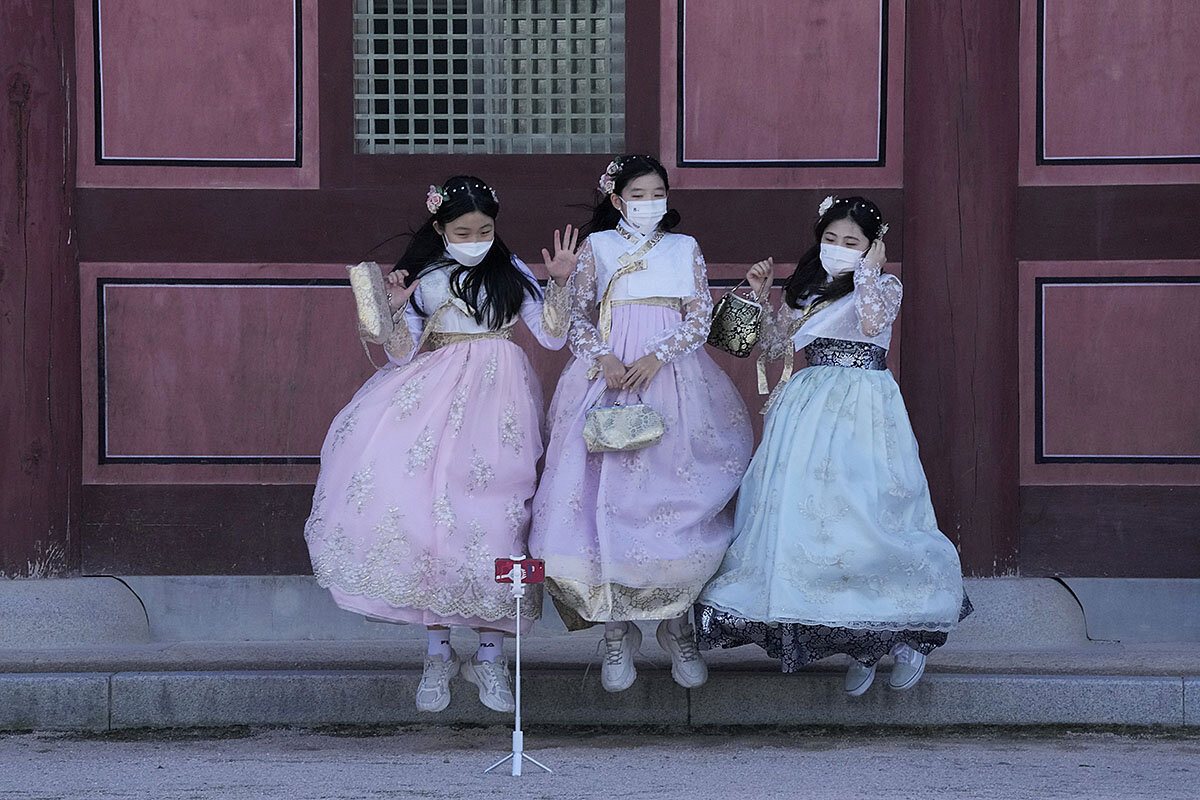
A look ahead
Thanks for joining us. Come back tomorrow. We’re working on a story about mudlarking – that’s digging along the banks of the River Thames for lost artifacts and finding respite from the city.




